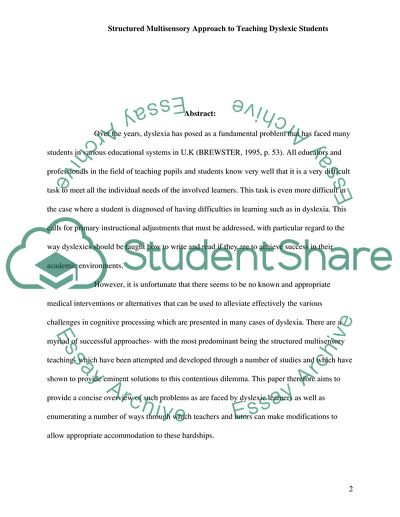Cite this document
(“Structured Multisensory Approach to Teaching Dyslexic Students Research Paper”, n.d.)
Structured Multisensory Approach to Teaching Dyslexic Students Research Paper. Retrieved from https://studentshare.org/education/1724048-discuss-the-importance-of-using-a-structured-multisensory-approach-to-teaching-dyslexic-students
Structured Multisensory Approach to Teaching Dyslexic Students Research Paper. Retrieved from https://studentshare.org/education/1724048-discuss-the-importance-of-using-a-structured-multisensory-approach-to-teaching-dyslexic-students
(Structured Multisensory Approach to Teaching Dyslexic Students Research Paper)
Structured Multisensory Approach to Teaching Dyslexic Students Research Paper. https://studentshare.org/education/1724048-discuss-the-importance-of-using-a-structured-multisensory-approach-to-teaching-dyslexic-students.
Structured Multisensory Approach to Teaching Dyslexic Students Research Paper. https://studentshare.org/education/1724048-discuss-the-importance-of-using-a-structured-multisensory-approach-to-teaching-dyslexic-students.
“Structured Multisensory Approach to Teaching Dyslexic Students Research Paper”, n.d. https://studentshare.org/education/1724048-discuss-the-importance-of-using-a-structured-multisensory-approach-to-teaching-dyslexic-students.


